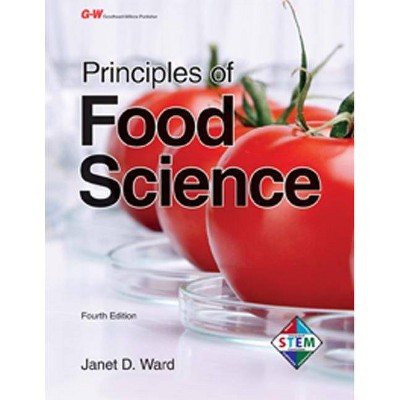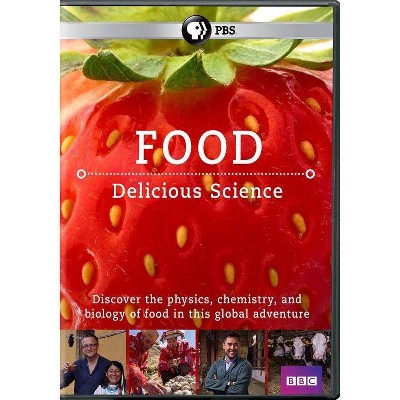Principles of Food Sanitation - (Food Science Text) 5th Edition by Norman G Marriott & Robert B Gravani (Paperback)

Similar Products
Products of same category from the store
AllProduct info
<p/><br></br><p><b> Book Synopsis </b></p></br></br>Sanitation and the Food Industry.- The Relationship of Biosecurity to Sanitation.- The Relationship of Microorganisms to Sanitation.- The Relationship of Allergens to Sanitation.- Food Contamination Sources.- Personal Hygiene and Sanitary Food Handling.- The Role of HACCP in Sanitation.- Quality Assurance for Sanitation.- Cleaning Compounds.- Sanitizers.- Sanitation Equipment.- Waste Product Handling.- Pest Control.- Sanitary Design and Construction for Food Processing.- Low-Moisture Food Manufacturing and Storage Sanitation.- Dairy Processing Plant Sanitation.- Meat and Poultry Plant Sanitation.- Seafood Plant Sanitation.- Fruit and Vegetable Processing Plant Sanitation.- Beverage Plant Sanitation.- Foodservice Sanitation.- Management and Sanitation.<p/><br></br><p><b> From the Back Cover </b></p></br></br><p>Now in its 5<sup>th</sup> Edition, the highly acclaimed <em>Principles of Food Sanitation</em> provides sanitation information needed to ensure hygienic practices and safe food for food industry personnel as well as students. The highly acclaimed textbook and reference addresses the principles related to contamination, cleaning compounds, sanitizers, cleaning equipment. It also presents specific directions for applying these concepts to attain hygienic conditions in food processing or food preparation operations. </p> <p></p> <p>New features in this edition include: </p> <ul> <p> <li>A new chapter on the concerns about biosecurity and food sanitation</li> <p></p> <p> <li>Updated chapters on the fundamentals of food sanitation, contamination sources and hygiene, Hazard Analysis Critical Control Points, cleaning and sanitizing equipment, and waste handling disposal</li> <p></p> <p> <li>Comprehensive and concise discussion about sanitation of low-, intermediate-, and high-moisture foods</li> <p></p></ul> <p></p> <p><em><strong>About the authors</strong></em></p> <p></p> <p><strong>Norman G. Marriott</strong> is an Extension Food Scientist and Professor Emeritus in the Department of Food science and Technology at Virginia Polytechnic Institute and State University, Blacksburg, Virginia</p> <p></p> <p><em>Robert B. Gravani</em> is a Professor in the Department of Food Science at Cornell University, Ithaca, New York</p> <p></p> <p> <ul> <p></p></ul> <p></p><p/><br></br><p><b> Review Quotes </b></p></br></br><br><p>"This 4th revision of the previously successful text is designed to teach the subject of food plant sanitation to an educated audience. It is not intended for individuals with no scientific knowledge. It can be used as an excellent textbook for an undergraduate college level food plant sanitation course. It is written for students who may not have an introductory science background. For example, the authors describe and define microorganisms (bacteria, yeast, mold viruses) and describe typical microbial growth. Because of this basic approach to sanitation, this text could serve students who need knowledge about sanitation but may lack some of the required background, such as restaurant or hotel managers and food service majors. Topics covered include those that are required for a food plant sanitation course: government rules and regulations, biosecurity, microorganisms, food contamination, employee hygiene, HACCP, quality assurance, cleaning and sanitizing, sanitation equipment, pest control, and chapters that cover specific food types (low-moisture food, dairy, meat and poultry, seafood, fruit and vegetables, beverage, food service) and management and sanitation. The topics are well-described and clearly explained. This text could be used to supplement courses that deal with specific topics such as meat science or fruit and vegetable processing. The appropriate chapters could be employed in discussions of sanitation in these facilities. I highly recommend this text."</p> <p>- Scott Martin, <em>Dept. of Food Science and Human Nutrition, University of Illinois</em><br><em><strong>Journal of Food Science Education Volume 5 Issue 2 April 2006</strong></em> </p><br>
Price History
Price Archive shows prices from various stores, lets you see history and find the cheapest. There is no actual sale on the website. For all support, inquiry and suggestion messagescommunication@pricearchive.us




















